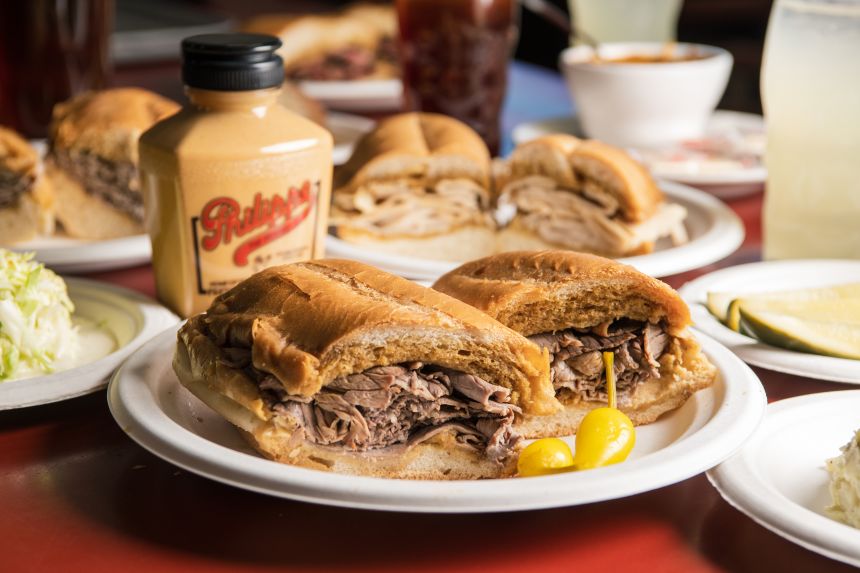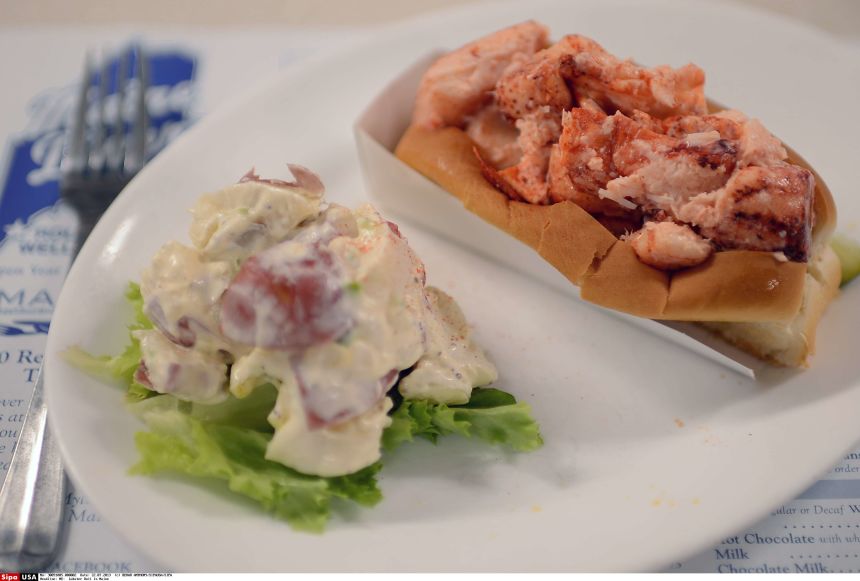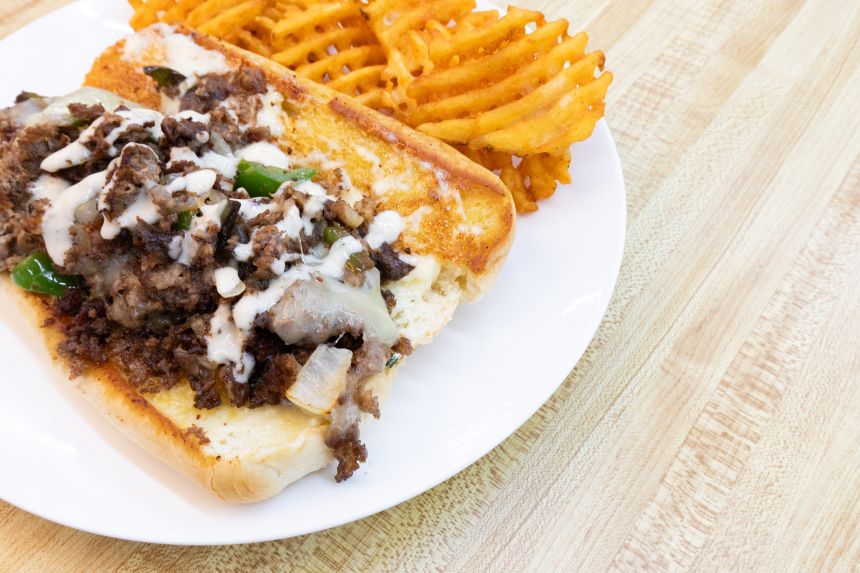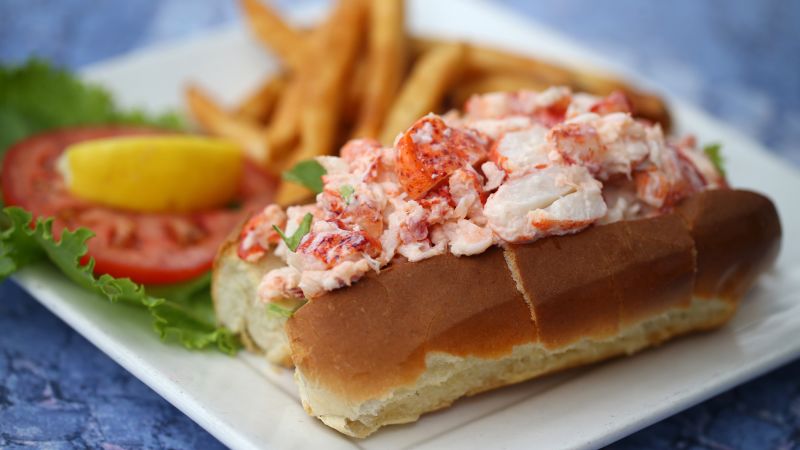Is there any food more intrinsic to America’s on-the-move lifestyle than the grab-and-go sandwich?
The deep, diverse array of US sandwich options owes much of its greatness to the creativity and resourcefulness of immigrant communities.
Cities and states from coast to coast claim their classics. New Orleans’ olive salad-studded muffaletta was invented by Italian immigrants who settled in the city’s Lower French Quarter. The Cuban sandwich as we know it today evolved in Florida and was shaped by immigrant communities from Cuba, Spain, Italy and Germany. And both Miami and Tampa take credit for it.
Feeling hungry already? We’ve rounded up 12 more of the greatest American sandwiches worth traveling for — or, if you’re lucky, seeking out in your own backyard. What are your picks? Please share them in the comments below.

Made famous well beyond Chicago thanks to “The Bear,” this spiced roast beef sandwich traces its origins to the early 1900s and the city’s Italian immigrants.
It’s essentially a hero roll filled with thinly sliced beef and topped with the pickled Italian relish mix called giardiniera. Sweet peppers and melted cheese can be piled on, too. Ciccio at Navy Pier is a popular spot for digging in.
The version featured on the FX/Hulu series “The Bear” was created by the show’s culinary producer, chef Courtney Storer, who was raised in Chicago alongside her brother and series creator Chris Storer.

A humble Southern staple, pimento cheese is sometimes referred to as the pâté of the South, although there’s evidence of early roots in New York City. But the Southern version that made it famous is a particular favorite in states like North Carolina and Georgia.
It’s a regular offering on the concessions menu at the men’s professional golf classic, the Masters Tournament, in Augusta, Georgia (where the sandwich still sells for $1.50). The traditional recipe is always served on white bread. Inside, a mash-up of ingredients turned into a thick spread include the classic artery-clogging mix of sharp cheddar, mayonnaise and diced pimento peppers (a derivative of Spanish pimientos). Cream cheese, grated onion and cayenne or hot sauce may also feature in some recipes.

Beef on weck is a local legend in Western New York (primarily the Buffalo area) that’s served on a kummelweck roll.
Never heard of it? Weck refers to the salt-crusted kaiser roll topped with caraway seeds. The top bun gets dipped au jus before capping a pile of thinly sliced roast beef (usually served rare) livened up with a slathering of horseradish.
Buffalonians are highly opinionated when it comes to whose beef on weck is best, but Anthony Bourdain tried the sandwich at Schwabl’s, which has been around since 1837, and called it a “tasty little masterpiece.”
Grouper sandwich, Florida

Florida might be better known for the Cuban sandwich that both Miami and Tampa claim as their own. But go anywhere along the Sunshine State’s Gulf coast, and in the Florida Keys in particular, and you’ll see grouper sandwiches on the menu at seafood shacks and upscale waterfront restaurants alike.
The white, flaky fish is a sought-after catch in both the Atlantic and the Gulf that can be served grilled, fried or blackened. According to a Tampa Magazine article, the first restaurant ad for a grouper sandwich was in Panama City in 1974. For a classic version of the grouper sandwich served with tartar sauce and a pickle, Frenchy’s Original Cafe in Clearwater Beach does an original beer batter-fried version as well as one that’s a tasty Reuben twist.

The oldest deli in New York City, Katz’s Delicatessen on the Lower East Side, debuted in 1888 as the small kosher Iceland Brothers deli before the Katz family got involved in 1903. Known for excellent American Jewish deli foods like corned beef, Katz’s has become a pilgrimage site for trying one of the city’s most iconic sandwiches, pastrami on rye.
The sandwich is thought to have first been popularized in New York by a Lithuanian immigrant who sold it from a Delancey Street deli. Pastrami traces its roots to the Ottoman Turks and then into Romania, where jerky-like beef, goat or mutton gave way to pastirma made, perhaps surprisingly, from goose. Immigrants in New York adapted again to take advantage of cheap and plentiful beef brisket. The American version uses smoked brisket, brined in pickling spices and piled high between two slices of rye bread, with a slathering of spicy brown mustard.

Known for more than country music and bachelorette party mayhem, Nashville is the source of a homegrown hot chicken sandwich that has become legendary as the city’s de facto fuel for fun.
The spicy chicken specialty is said to have been invented more than a century ago when a scorned lover created a spicy food trap in the form of overpoweringly pepper-hot fried chicken that her man unfortunately loved instead of loathed. That man was Thornton Prince, and today his great niece still cooks up the quintessential dish that draws the crowds to Prince’s Hot Chicken to dig in.

The debate over which Los Angeles restaurant — Philippe’s or Cole’s —invented the French dip sandwich in the early 20th century may never be resolved. But there’s no denying what sets this entry in the thinly-sliced roast beef sandwich category apart — the fact that its French roll gets dunked into pan juices or broth before eating.
The effect is deliciously drippy, whether the sandwich is served already “wet,” as is the case at Phillipe’s, or au jus for the eater to dip to their liking, according to Cole’s customs. Purists prefer to order the sandwich sans cheese, with spicy mustard as the condiment.
Lobster roll, New England

New England’s quintessential summer sandwich has gained fame across the country and around the globe. Chunky lobster meat fresh from its shell — chilled and mixed with ingredients like lemon juice, mayonnaise and herbs — gets stuffed into a bun split across its top rather than down the side. In Maine, lobster rolls are typically served cold and with mayo while Connecticut’s classic version is warm and buttered.
There’s no better place to sink your teeth into this crustacean sensation than somewhere along the stretch of coastline between Maine and Connecticut — preferably seated at a picnic table with an ocean view at a low-key seafood shack like the seasonal eatery The Lobster Shack at Two Lights in Cape Elizabeth, Maine.

A hot mess in sandwich form, nothing goes down quite like the City of Brotherly Love’s favorite sandwich. For the quintessential Philly version, a hoagie roll – crusty on the outside and soft and chewy within – is the essential bread vessel.
Inside, ribeye steak mingles with melted cheese, which might be provolone or, as some purists argue, Cooper Sharp cheese. Other Philly cheesesteak fans insist that American cheese or Cheez Whiz is the way to go. Peppers and onions can be added according to taste. The sandwich was invented in the 1930s by hot dog vendor Pat Olivieri, whose family still owns Pat’s King of Steaks, open 24/7 in South Philadelphia.
California veggie sandwich
Built to harness seasonal bounty, this California favorite, sometimes called a “hippie sandwich,” often puts sprouts, avocado and copious crunchy veggies on multigrain bread.
The California veggie sandwich doesn’t have a clear origin story but may have started to reach beyond the Golden State during the health food boom of the ’70s and ‘80s. Today, All Time in Los Angeles serves up a tasty version — a white cheddar veggie sandwich with Japanese mayo on house sourdough.
Think of this sandwich, which is easy to customize at home, as a salad between two slices of bread. And feel free to create your own take, adding a layer of cheese or hummus. You’ll never go wrong with avocado and sliced cucumbers tucked inside, but the key is to focus on the freshest and most seasonal ingredients.

Said to have been invented to feed drivers during a streetcar strike in New Orleans in 1929, many go-to po’ boys put the spotlight on fried seafood from Louisiana’s waters — with shrimp, oysters, crawfish and catfish among the common fillers.
A staple in New Orleans’ pantheon of incredible eats and far from a light meal, the sandwich is served on French bread with shredded lettuce and copious lashings of creamy remoulade sauce. Look for the handpainted sign at Domilise’s in a quiet uptown neighborhood to try a beloved version at one of the city’s po’ boy institutions

Louisville’s most legendary dish can be traced to the 1920s and The Brown Hotel, where the broiled and open-faced turkey sandwich with bacon and Mornay sauce was dreamed up as a late-night snack for revelers at the hotel’s popular dinner dance.
Guests can still dig into it at the hotel’s restaurants and bar, where it’s served on Texas toast with trimmed crusts. You’ll find the sandwich on menus at restaurants throughout Louisville and Kentucky, including at the Kentucky Derby.
Terry Ward is a Florida-based travel writer and freelance journalist in Tampa who loves the Cuban sandwiches at La Segunda in Tampa and Sanguich in Miami.

